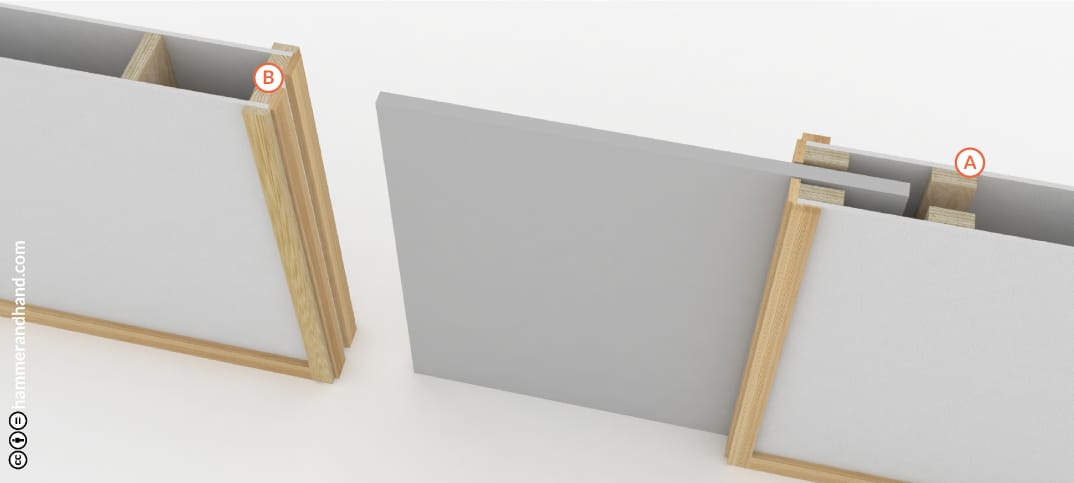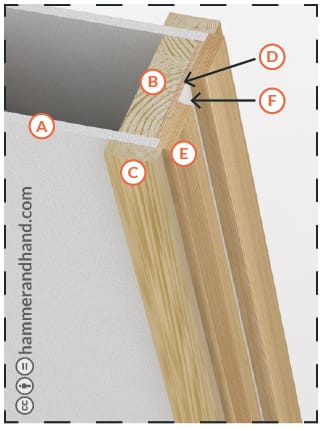
A. Studs at pocket to be engineered lumber or heavy gauge steel studs to provide rigidity to wall panel.
B. Create rabbet in door jamb by installing additional trim to receive the door and provide complete closure.
B. Create rabbet in door jamb by installing additional trim to receive the door and provide complete closure.
Pocket Door Detail

A. SHEETROCK, GYPSUM, OR WALL BOARD
B. STUD OR TRIMMER
C. CASING
D. PAINT/STAIN GRADE SUB JAMB OR FINISH MATERIAL
E. SPLIT JAMB
F. POCKET OR CAPTURE
B. STUD OR TRIMMER
C. CASING
D. PAINT/STAIN GRADE SUB JAMB OR FINISH MATERIAL
E. SPLIT JAMB
F. POCKET OR CAPTURE
Hardware
Options
- Johnson hardware: 200sd commercial grade with 200 series door hanger and hanger plate.
- Ducasse: Many options.
- Sugatsume: Many options.
- Hafele: Many options.
Pocket Door Frame Kits
For situations where wall framing is limited to 3 1/2” (not recommended) you may use the Johnson Pocket Door Kit 2710 and 2711. Do not use Johnson Pocket Door Kit 1500, 1500HD, 1500SC, 2511, or 2000.

